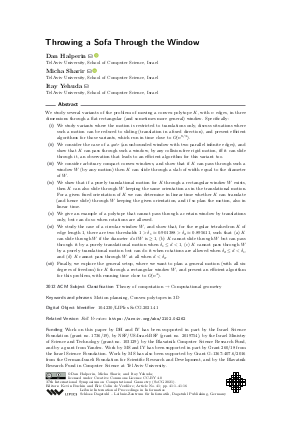LIPIcs.SoCG.2021.41.pdf
- Filesize: 1.44 MB
- 16 pages

 Creative Commons Attribution 4.0 International license
Creative Commons Attribution 4.0 International license























Feedback for Dagstuhl Publishing